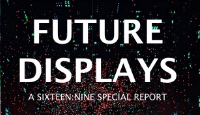
Nervous About Migrating Your Digital Signage Network To A New Platform? Here’s How To Make It Painless.
January 22, 2024 by guest author, Christian Armstrong
Guest Post: Christian Armstrong, Spectrio
 Switching digital signage management software can solve ongoing problems and better meet the needs of end-users, but a successful, largely seamless technology migration will owe a lot to careful upfront thinking and planning.
Switching digital signage management software can solve ongoing problems and better meet the needs of end-users, but a successful, largely seamless technology migration will owe a lot to careful upfront thinking and planning.
With networked digital displays increasingly central to how businesses communicate with their customers, business partners and staff, software platform migrations need to be carried out with minimal or, better, zero interruptions.
The keys to successful digital signage software migrations all track to some relatively simple questions:
- What are the issues with the existing solution, and what would a new software platform needs to solve?
- What are the expected improvements and enhancements from a new platform?
- What is the current and desired content strategy?
- How will it be used, and by who?
- What’s involved in a cutover, from early tests to a full migration?
Assessing What’s Now In Place
End-users may decide to switch platforms for a variety of reasons – everything from budget, reliability and quality of service, to specific functionality and a platform design that better suits the end-user’s needs.
The first assessment step is developing a full sense of what’s already in place and how the software is used.
What are the core characteristics of the network and the devices already deployed? For example, what is the age and who is the manufacturer of the devices used to store and play out media messaging, whether they are PCs, smart displays or specialized media players?
If the playout devices are older than three or four years, they might be “aging” out. Replacement may make more sense than retrofitting and repurposing devices, to minimize the risk of breakdowns or spotty performance, which can require costly field service and replacement calls.
If the devices are relatively new and the end-user is satisfied with reliability and performance, then any software being contemplated as a replacement needs to work the device’s operating system. For example, Windows-based software will not run on the proprietary operating systems of major smart display manufacturers like LG and Samsung, unless third-party “middleware” is added to the solution.
The planning team will also want to assess:
- The quality, depth and overall capabilities of the device management software currently in use, as those attributes can impact what can be done remotely versus on site;
- Security measures on the end-user network, such as firewalls;
- The type and quality of connectivity, including an understanding of any bandwidth restrictions;
- The type of connectivity: hard-wired or WiFi?
Content Needs And Strategy
The type, volume, frequency and sources of content all help define and shape what’s needed in a digital signage CMS platform. Choosing the wrong platform may directly affect execution, so it is critical to get a sense of the true and full programming needs.
Questions and steps include:
- Getting a full audit of the current system. For example, is the on-screen content made up of finished files – images and videos – or is it dynamic and updated on the fly through data integrations?;
- Determine the frequency and timing of updates, as that can impact everything from network traffic to storage needs. Frequency and timing can also directly affect and guide the platform migration, with end-users understanding what content needs to be prioritized when a new platform is activated;
- If data integration is involved, what are the data sources and how is the data accessed? It could be everything from simple shared files and data cells on a network to third-party business and building systems that require APIs (programming interfaces). A new platform might already have an integration with a third-party system, making it relatively easy, or there could be weeks and months of time-consuming and costly development work needed;
- Are there any complex requirements for tagging and segmentation? Assigning specific, pre-defined terms to the locations, devices and media assets enables operators to efficiently target messages in different ways – such as scheduling messages by attributes, like the geo-location of the venue or the types of goods and services available at specific locations.
Defining Users And Workflows
The most visible characteristic of a digital signage CMS software platform is the user experience, and terms such as user-friendly, intuitive and suitability are all important considerations. It’s also important to understand who uses the software, and how.
Questions include:
- How many users are in the current system?;
- How is the user governance configured? For example, are there groups or access restrictions, or preview and content approval processes, that need to be brought over to a new platform?
- How much training will be required, how does that happen, and does training differ by job role? For example, are training needs the same for power-users and periodic users?
Easing Into A Big Switch
Because there may be dozens, hundreds or even thousands of devices – media players, screens and related electronics – platform migrations tend to have well-defined steps and timelines. It’s prudent to ease into a project, starting with modest, focused testing in a controlled lab setting, and then gradually expanding based on what was learned.
- Lab: Starting Small
-
- Start to move content over into new CMS;
- Test hardware variety on a small batch of devices in a lab setting to ensure proper playback of content;
- Use the “lab” period to also test all of the content varieties and ensure the proper playback;
- Begin testing any integrations of content, making sure output matches desired functionality, including logic situations. For example, if a data point shows “this” happened (like a store item going out of stock), do “that” (remove it from the promotional messaging schedule);
- Ensure all governance and user groups are configured initially, and functioning as planned and needed.
- Pilot: Expanding To Live Endpoints
- Deploy the new platform and solution to a controlled number of locations, such as retail stores. This generally involves testing remote updates through device management software that has “rollback” capabilities. If there are snags, the software allows the network to be rolled back to a previous, pre-update state;
- Continue to slowly activate and update test sites, while also monitoring and improving processes based on success criteria.
- Rollout: Intensify Expansion
As kinks in a strategy are smoothed out, operators should be able to move to an incremental or full rollout of the new solution.
There can still be unforeseen “gotchas” that can’t be planned, such as delays with contractors in the field, seasonality (stores in the midst of peak shopping periods like Christmas) and equipment shortages related to supply chains.
A good tech service firm will document their internal processes, and make recommendations to improve efficiencies. Larger firms have also, because of recent COVID-era experiences, developed better processes and strategies to deal with shortages in both equipment and specialist labor.
- Continuous Learning: Assess and Improve
Once a migration is complete, a full assessment of the deployment should be performed, with any potential kinks in scheduling and content playback addressed.
Migrations Reflect The Past And Present
The decision to migrate software platforms reflects a lot of learning built up from the first iterations of a digital signage network. End-users learn a lot about their processes and needs, and how operations fit within an organization. They also tend to come away with much better ideas of what they really need, versus what they thought they needed when the first screens were turned on.
The best way to ensure the successor platform truly meets needs, and fits an organizations workflows and working style, is to build off what was done and learned, and develop a thoughtful, deliberate plan to put an optimal solution in place, with little or no disruption to the overall business.
ABOUT THE WRITER
With 16 years of experience in the digital signage industry, Christian Armstrong has gained a wealth of knowledge and expertise in his field. As one of the founding members of Industry Weapon, a CMS provider, Christian played a significant role in the company’s growth and success. In 2020, Industry Weapon was acquired by Spectrio, where he now serves as the Senior Director of Business Development. His focus on content management and digital signage content strategy has been an essential aspect of his role at Spectrio. With his extensive experience and commitment to excellence, Christian continues to make valuable contributions to the digital signage industry.



Leave a comment